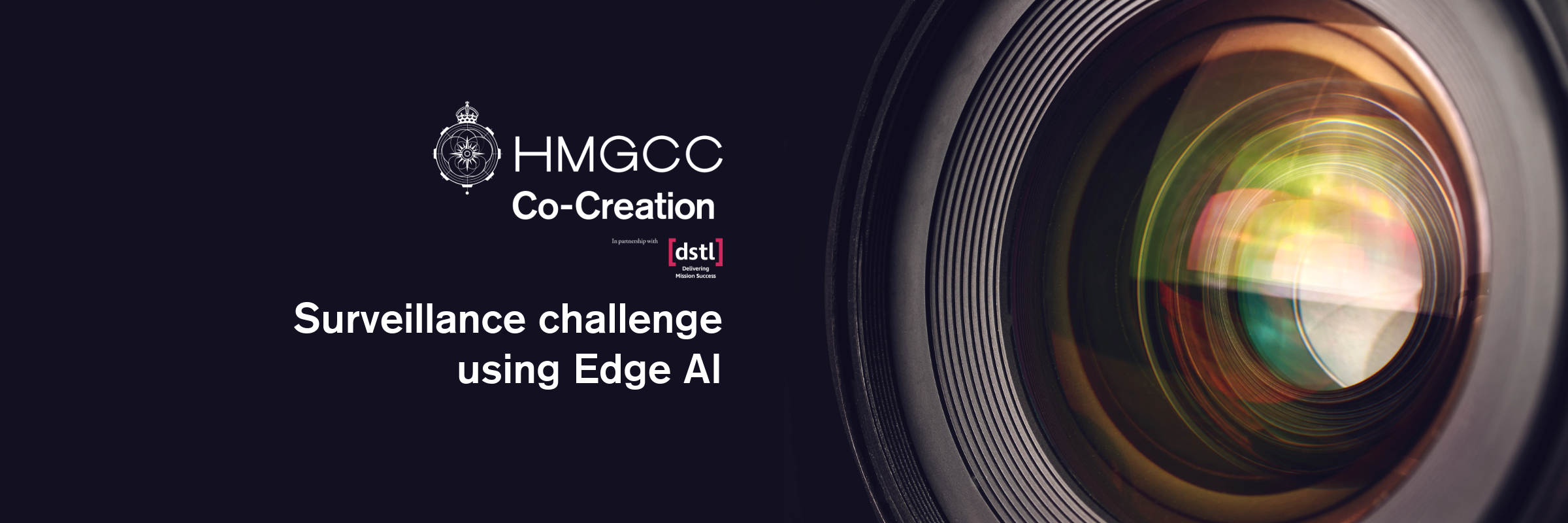
Surveillance cameras are vital tools for use in national security, but they are often battery powered, power-hungry and run for a long time to capture the right footage.
In this challenge, HMGCC Co-Creation wants to hear from organisations capable of enabling visual surveillance systems to operate with less power – using edge AI. This challenge is based around the idea that edge AI, which deploys AI algorithms directly onto devices, could help intelligently reduce the power needed by enabling use of trigger sensors.
Organisations are being asked to apply if, over a 12-week period, they can develop and demonstrate technology to meet this challenge. HMGCC Co-Creation will provide funding for time, materials, overheads and other indirect expenses.
The challenge
Context of the challenge
Visual surveillance is a common technique for law enforcement, national security and military organisations. In dynamic operational scenarios, there is rarely the opportunity to use mains power, so battery power is often the method used.
A surveillance system typically comprises a high quality and power-hungry visual camera, a battery and a communication system to stream or send back images to a central location.
Surveillance can be a necessary tool in many types of situations and locations, for example urban or remote places, or in hostile environments.
The gap
One common way of cutting power use in surveillance systems is by using trigger sensors, such as passive infrared (PIR) sensors. Examples are seen in video doorbells. This means the visual sensor, which uses significant power, is only triggered when something needs to be recorded. However, they are prone to being falsely triggered, and effectiveness can reduce in low light conditions.
By incorporating intelligence into a surveillance system, there is an opportunity to use alternative sensors such as audio, radar, low power visual, etc, to only trigger when very specific events occur such as a particular vehicle or person comes into view.
Example use case
Lucy is the chief investigator for two related surveillance operations – one in a rural barn and one in an urban area. These are both linked by the activities of a criminal gang thought to be manufacturing illicit drugs. Lucy’s operation is now at the position where she wants to record activities of the lab operators, using visual surveillance, without raising suspicion.
She wants to use a high quality but power-hungry camera. She usually couples this with passive infrared (PIR) sensors so the camera only switches on when movement is detected. However, particularly in the urban environment, the PIR will falsely trigger, reducing battery life and, consequently, operation deployment time.
Lucy decides to deploy some newly acquired technology. She uses her normal camera, battery and communication system, but connects an off-the- shelf low power camera coupled with an edge AI device.
The low power camera is not good enough to accurately identify a person and cannot be used for evidential purposes in court. But the edge device is programmed to use the feed from the low power camera and recognise a subject of interest (SOI). It can then send a message to Lucy as well as turning power on to the camera for images to be captured and sleeps when the SOI (the trigger) is out of view.
With the new device, more than 99% of the visual imagery taken is filtered out and only the crucial information is sent back to Lucy. Not only does this save battery power, but it also saves the time taken to review footage.
Project scope
In this 12-week project, applicants should aim to deliver a demonstration showing the enhanced capabilities of existing surveillance systems by providing separate edge analytics modules. This could focus on the analytical software, power efficient edge AI hardware, multi-modal sensors or a systems approach. Organisers of this challenge are particularly interested in edge AI / ML technology, however this challenge is open to other non-AI solutions.
This is open to Technology Readiness Levels (TRL) from 4 – 9. It is recommended that in proposals label both the existing TRL and TRL that would be expected by the end of 12 weeks. This challenge encourages commercialisation by bringing a new or refined product or service to market to which you have the IP to exploit.
Essential requirements:
- Project focus on low-power edge devices.
- Minimised power consumption is crucial.
- Ability to plug and play into existing surveillance systems.
- Consider secure by design. Intelligence on the edge device must be protected against compromise.
- Receive a demonstrator as the final deliverable.
Not required:
- Horizon scanning only.
Consider using existing object detection training datasets, as sharing of data from HMGCC Co-Creation is unlikely.
Key dates
Monday 28 April 2025
Competition opens
Tuesday 13 May 2025
Clarifying questions deadline
Friday 16 May 2025
Clarifying questions published
Thursday 29 May 2025 at 5:00pm
Competition closes
Wednesday 11 June 2025
Applicant notified
Tuesday 17 June 2025
Pitch day in Milton Keynes
Wednesday 18 June 2025
Pitch Day outcome
Friday 27 June 2025
Commercial onboarding begins*
*Please note, the successful solution provider will be expected to have availability for a 1-hour onboarding call via MS Teams on the date specified to begin the onboarding/contractual process.
July 2025
Target project kick-off
Eligibility
This challenge is open to sole innovators, industry, academic and research organisations of all types
and sizes. There is no requirement for security clearances.
Solution providers or direct collaboration from countries listed by the UK government under trade
sanctions and/or arms embargoes, are not eligible for HMGCC Co-Creation challenges.
